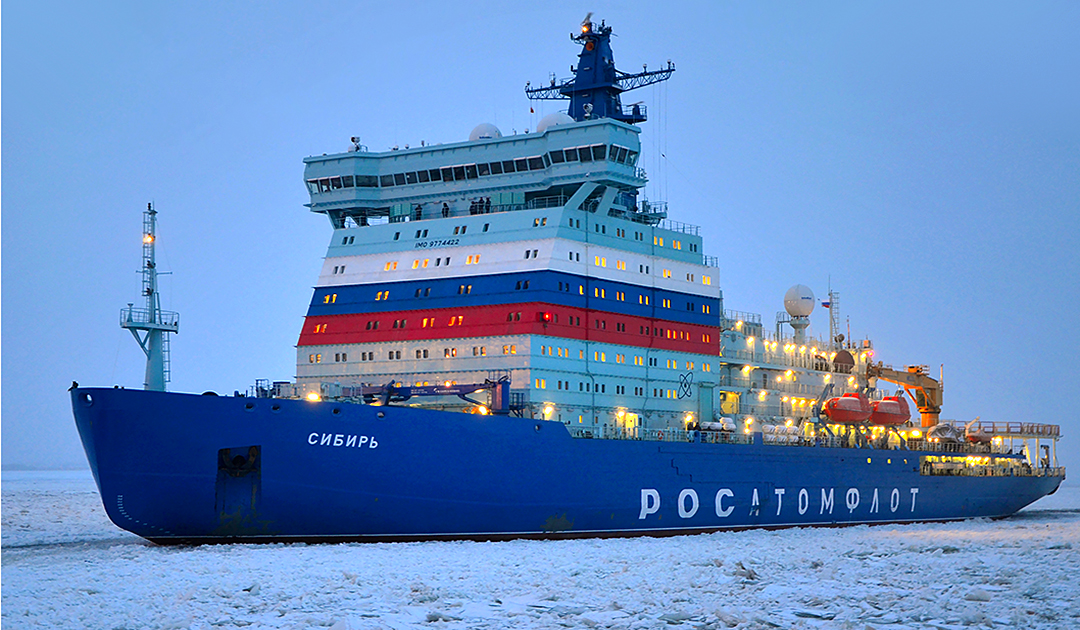
On the morning of January 13, 2022, the nuclear icebreaker “Sibir” left the port of St. Petersburg for its home port of Murmansk. The icebreaker is expected to arrive in Murmansk in about eight or nine days, after which it will be deployed in the waters of the Northern Sea Route. The “Sibir” is already the second delivered icebreaker of the 22220 class and will complement the rapidly growing fleet of powerful icebreakers tasked with keeping the Northern Sea Route open for the whole year.

“The crew of the nuclear icebreaker ‘Sibir’ consists of experienced navigators who have worked out and know well the transfer route from St. Petersburg to Murmansk,” said Leonid Irlitsa, first deputy general director of FSUE Atomflot’s shipping director.
Testing and monitoring of all systems on the icebreaker will continue in the coming months. It is planned that the nuclear icebreaker “Sibir” will start its first working mission a few days after its arrival in the port of Murmansk. The ship’s operational location will be the western sector of the Arctic, the Ob-Yenisei region of the Kara Sea.
Rosatom has already indicated that it might build two more nuclear icebreakers, since keeping the Northern Sea Route open year-round would be nearly impossible without an additional number of super-powerful icebreakers.

The first icebreaker “Sibir was in operation from 1978 to 1992
The new icebreaker “Sibir” was named after the first nuclear icebreaker “Sibir”, which was decommissioned in 1992. In 1987, the nuclear-powered icebreaker “Sibir” carried out year-round navigation on the Murmansk-Dudinka line for the first time.
The first “Sibir” made history in May/June 1978 when it needed only 18 days to sail from Murmansk to the Bering Strait. In 1987, the “Sibir” undertook a voyage that was unique in the history of Arctic shipping. First, members of the Russian research station North Pole-27 were picked up from a drifting ice floe, then the station North Pole-29 was opened and subsequently the North Pole was approached for research purposes.
Heiner Kubny, PolarJournal





